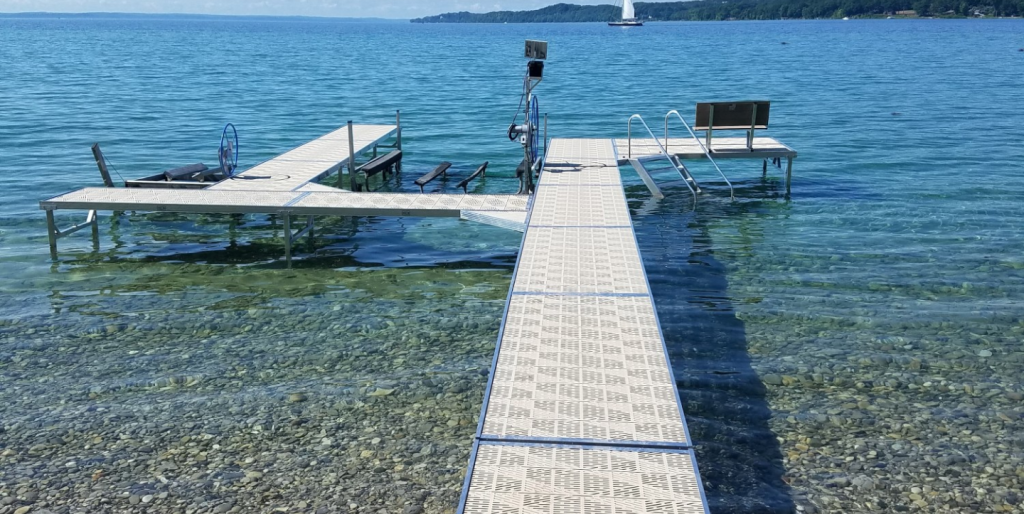Introduction
If you’re lucky enough to have a dock as part of your property, you’ll know the immense joy it can bring. It’s a gateway to the water, an extension of your home, a place for fun, relaxation, and making beautiful memories. However, the deck needs regular care and maintenance to keep it safe, functional, and visually appealing. Over time, you might need to replace the decking entirely, and that’s when you have the opportunity for a fresh start—a new beginning. This comprehensive guide will help you navigate the ins and outs of replacement dock decking, equipping you with handy tips to make the best decision for your needs.
Recognising When It’s Time for a Replacement
Signs of Wear and Tear
Docks are subject to wear and tear like anything exposed to the elements. The harsh sun, saltwater, moisture, and temperature fluctuations can lead to signs of deterioration. You might notice splintering wood, peeling paint, warping, or other visible damage. It is time for a new deck if these signs are widespread and not confined to a small area.
Safety Concerns
The safety of those who use the dock should always be a priority. If the decking has loose boards, significant cracks, or unstable sections, these safety hazards are red flags that you might need to replace your dock decking.
Ageing Dock
Age is another factor to consider. While the lifespan of a dock deck can vary based on material, a traditional wood deck will typically last around 10-15 years with regular maintenance. If your dock is nearing or has surpassed this age, it might be time to consider a replacement.
Choosing Your Decking Material
When replacing your dock deck, choosing a suitable material is one of the most significant decisions. Each option has advantages and drawbacks, so it’s crucial to consider what will suit your needs and environment best.
Wood
Wood has long been a traditional choice for dock decking. It’s famous for its classic and timeless aesthetic, which naturally complements the water and outdoor surroundings. However, wood does require regular maintenance, including sealing and staining to protect it from the elements. Hardwoods like teak and jarrah are more durable and resistant to decay but come at a higher cost.
Composite
Composite decking is made from a blend of wood fibres and plastics. It offers a wood-like appearance without the same degree of maintenance. Composite decks are resistant to warping, splintering, and rotting. However, they can be more expensive than natural wood and, over time, might fade due to UV exposure.
Plastic or Vinyl
Plastic or vinyl decking is another option to consider. It’s highly resistant to rot and insects and requires minimal maintenance. Plus, it can come in a variety of colours and styles. However, plastic decking can be slippery when wet, which is something to keep in mind if your dock sees a lot of foot traffic or is regularly exposed to water.
Planning Your Replacement
With a chosen material, it’s time to plan the replacement dock decking process. This phase includes measuring, budget setup, and considering the right time to do the replacement.
Measurement
Before you start any deck replacement, measuring the area accurately is essential. This step ensures you order suitable materials, reducing wastage and saving on costs. Remember, it’s always better to overestimate slightly to account for errors or unforeseen needs.
Budgeting
Setting up a realistic budget is crucial. Aside from the cost of materials, consider labour costs if hiring professionals. Consider any additional features you can add, like a railing system or built-in seating.
Timing
Choosing the right time to replace your dock decking is also essential. You should plan the replacement during a dry season, which makes for easier installation and prevents damage to the new decking.
Installation Tips
Once your plan is set, and materials are ready, it’s time for installation. Whether you’re doing it yourself or hiring professionals, here are a few tips to remember.
Prepare the Site
Before starting, make sure the site is fully prepared. Remove any furniture, equipment, or loose items from the dock. If replacing an old deck, ensure all old materials and debris are entirely cleared.
Follow Safety Procedures
When working on dock decking, safety should be the primary concern. Always wear appropriate safety gear, like gloves and safety glasses. If you’re working near the water, consider wearing a life jacket.
Follow the Installation Instructions
Each decking material will come with its specific installation instructions. It’s crucial to follow these to ensure the decking is installed correctly and will last for years.
Maintaining Your New Dock Deck
Once your new dock deck is installed, it’s all about keeping it in top condition. Regular maintenance can extend the life of your deck and keep it looking its best.
Regular Cleaning
Clean your dock deck regularly to remove dirt, salt, and other debris that can damage the material over time. The cleaning process will depend on the decking material, but a soft brush and mild detergent will do the trick.
Seal and Protect
If you’ve chosen a wood deck, apply a sealant to protect it from moisture and UV damage. Even if you’ve opted for a composite or plastic deck, consider using a UV protectant to prevent fading and discolouration.
Regular Inspections
Inspect your dock deck regularly for signs of damage or wear. Catching any issues early can prevent them from worsening and help maintain your dock’s safety and longevity.
Conclusion
Replacing your dock deck is a significant project, but with careful planning and preparation, it can also be rewarding. It’s your chance to breathe new life into your dock, improve its functionality, and create a space you’ll continue to enjoy for many years. So, with these tips, you’re well-equipped to embark on this new beginning. Happy decking!

